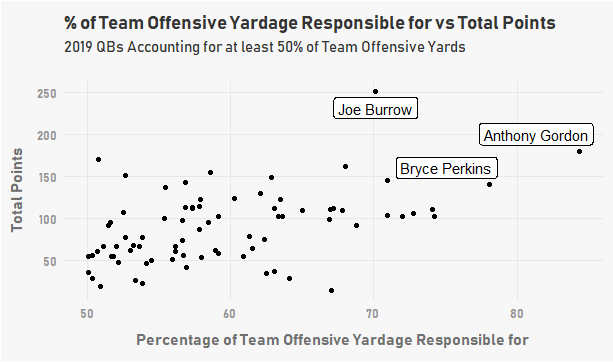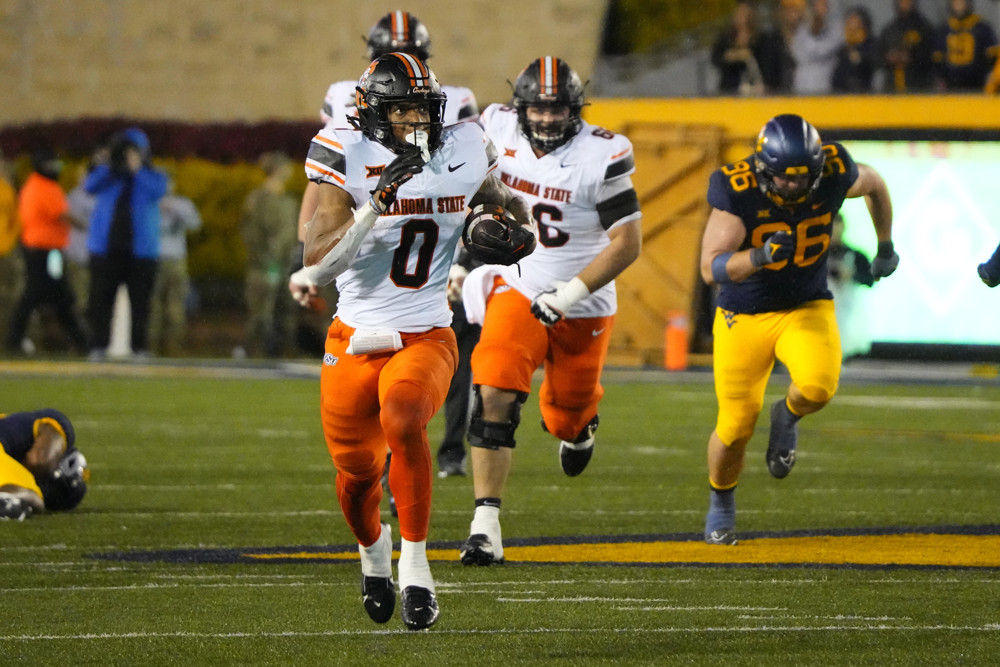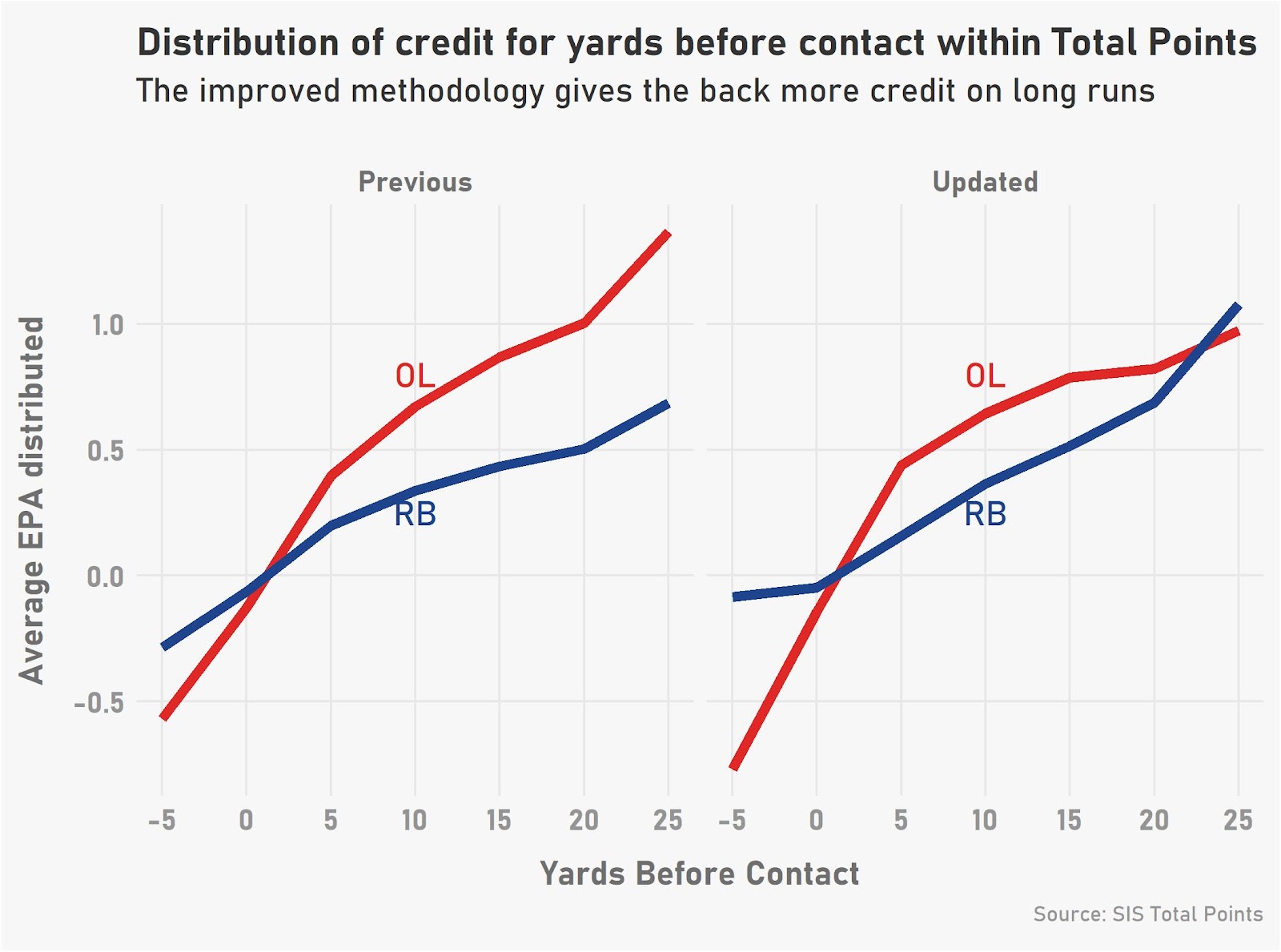By LOGAN KING
In 2019, the Virginia Cavaliers football team reached heights not seen by the program in recent memory, reclaiming the Commonwealth Cup, winning the ACC Coastal Division, and appearing in the Orange Bowl. Much of the team’s success on the field can be attributed to the play of 2nd Team All-ACC quarterback, Bryce Perkins.
Statistically speaking, Perkins was one of the top quarterbacks in the country last season, ranking tenth in the NCAA in Total Points, SIS’s individual player contribution metric. Perkins was more important to his offense than nearly every other player was to their own in 2019, accounting for 78% of UVA’s offensive yardage (trailing only Anthony Gordon’s 84%). Needless to say, there are big shoes to fill at quarterback in Charlottesville next season.

Virginia has been winning on the recruiting trail, in an effort to replace the talent lost from last year’s graduating class. According to 247Sports, the Hoos 2021 recruiting class ranks 21st overall, with eight new high school commitments since April 21. Additionally, Virginia secured the transfer of dual-threat quarterback, Keytaon Thompson from Mississippi State. Thompson joins the Cavaliers with two seasons of eligibility remaining and will be immediately eligible.
Thompson is expected to battle redshirt sophomore Brennan Armstrong, who backed up Perkins in each of the previous two seasons, for the starting job in 2020. Armstrong (6’2”, 220 lbs) has a similar build to Perkins (6’3”, 215 lbs) according to the team roster. Not much can be made from Armstrong’s in-game experience at the collegiate level, as he has only seen 72 offensive snaps, which have primarily come in cleanup duty. However, entering his third season in offensive coordinator Robert Anae’s system, Armstrong has experience of the playbook on his side in this position battle, which could be the deciding factor given the shortened offseason.
Like Armstrong, Thompson served in a backup role while at Mississippi State, however Thompson also has starting experience and is 2-0 as a starter (notching a win in his first career start against Lamar Jackson’s Louisville Cardinals). Thompson carries a larger frame than that of Armstrong (and Perkins), at 6’4” 225 lbs and was a higher ranked recruit, according to 247Sports Composite.
In Mississippi State’s offense, Thompson wasn’t asked to do extensive work through the air. However he was strong and decisive in the run game and showed poise in the Bulldogs’ fourth quarter comeback against Louisville in 2017. Despite a small sample of games, it is clear that Thompson fits the ‘thorterback’ (dual threat) mold that Coach Mendenhall wants under center. Furthermore, the previous two starting quarterbacks for Virginia have been transfer players with two seasons of eligibility remaining upon enrollment (Kurt Benkert, Bryce Perkins).
While it is unclear who may win the starting job, a look at the past offensive tendencies of the Cavaliers may shed some light on how the offense might operate depending on who is under center next season. Virginia’s designed pass-to-run split has been relatively stable the last four seasons, with the exception of 2018, Perkins’ first year in the system.
| Year | Primary Quarterback | Designed Pass Percentage | Designed Rush Percentage | Percent of Designed Rushes by QB |
| 2016 | Kurt Benkert | 63% | 37% | 4% |
| 2017 | Kurt Benkert | 63% | 37% | 4% |
| 2018 | Bryce Perkins | 54% | 46% | 31% |
| 2019 | Bryce Perkins | 66% | 34% | 38% |
(Designed passes include plays in which the quarterback scrambles; spikes and kneels are excluded from this dataset)
In 2016-17, the offense was led by Kurt Benkert, a traditional pocket passer. During Perkins’ first year in the offense, there was a significant shift in playcalling tendencies as the rate of designed runs was nearly 10% higher than the previous season.
The quarterback change was partly responsible for the drastic shift in run rate, as the percentage of designed runs by the quarterback position increased from 4% to 31% when Perkins took the offensive reins. However, in Perkins’ second year, there was a reversion back to the designed pass and run tendencies from two seasons prior, while the rate of designed rushes by the QB continued to increase.
This reversion to a higher passing rate was likely due to an increased understanding of the playbook and strengthened connection with the core group of receivers present on the roster both years (Hasise Dubois, Joe Reed, Terrell Jana). Meanwhile the increase in the QB designed-rush ratio was the product of the desire to keep the ball in the hands of the best player on the field.
Extending this trend to the current quarterback situation, several possibilities reveal themselves. In the event that Armstrong wins the job, the designed pass and run ratios likely remain around 65/35, given his experience in the offensive system and the return of key offensive contributors from 2019 (Terrell Jana, Wayne Taulapapa, and the entire offensive line).
However, the rate of designed runs by the quarterback will likely decrease, as Armstrong has not proven himself to be the difference-maker on the ground that Perkins was. In the event that Thompson wins the job, there may be a shift back to a more run-heavy approach, similar to 2018.
Thompson will not have much time to absorb the playbook and gel with the rest of the offense, especially given the shortened offseason. Therefore you may see a game plan centered more around the ground game.Thompson has shown capability on the ground, which could signal a high rate of designed quarterback runs. No matter the outcome, it is sure to be a highly-contested battle for quarterback in a college football season marked by uncertainty.


